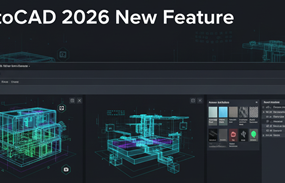Mechanical engineers can leverage AI (Artificial Intelligence) in various ways to enhance their work processes, optimize designs, and improve overall efficiency. Here are several ways in which mechanical engineers can use AI:
Design Optimization:
AI can assist mechanical engineers in optimizing product designs. Through generative design algorithms, AI can discover a huge range of design opportunities based totally on targeted criteria which include material properties, weight, strength, and price. This allows engineers to arrive at progressive and efficient designs that might not were identified thru traditional methods.
Simulation and Analysis:
AI-powered simulation tools can speedy and accurately are expecting the behavior of complex mechanical systems beneath numerous conditions. This consists of structural analysis, fluid dynamics, heat switch, and more. AI can speed up simulations, permitting engineers to iterate and pleasant-tune designs quicker.

Predictive Maintenance:
By analyzing sensor records from machines and gadgets, AI can expect when mechanical systems might fail or require renovation. This enables proactive renovation strategies, lowering downtime and lengthening the lifespan of the device.
Manufacturing Process Optimization:
AI can optimize manufacturing strategies by studying production information and suggesting upgrades. This should contain adjusting parameters to decorate efficiency, reduce defects, and limit energy consumption.
Supply Chain and Inventory Management:
AI algorithms can are expecting calls for fluctuations and optimize inventory levels, making sure that the right components and materials are available whilst wished while minimizing extra stock.
Robotics and Automation:
Mechanical engineers can paint on designing and integrating AI-pushed robotic structures. These robots can carry out responsibilities that are dangerous, repetitive, or require high precision. Machine getting to know can permit robots to evolve and analyze from their studies, enhancing their overall performance through the years.
Quality control:
AI-based vision systems can be used for quality control in manufacturing processes. These systems are able to identify defects, obstructions and discrepancies in manufacturing processes, ensuring high quality products.
Energy efficiency:
AI can help drive energy efficiency in machine systems. By analyzing real-time data and adjusting system parameters, energy consumption can be reduced without compromising efficiency.
Collaborative thinking:
AI tools can facilitate collaboration between engineers by providing real-time design feedback, suggesting improvements, and helping to solve design challenges
Natural Language Processing (NLP):
Technical professionals can use NLP to connect to design software via voice commands or text to streamline design creation, modification, and analysis
Data analysis:
AI can analyze large amounts of data collected from sensors and simulations to identify patterns, trends and insights that can inform better design decisions
Materials science and research:
AI can accelerate research in materials science by predicting material types and suggesting new materials with desirable characteristics for specific applications.
Safety and risk analysis:
AI is capable of modeling and simulating hazards and potential hazards associated with industrial design, helping engineers design safer products and processes.
Integrating AI into technology requires a blend of technical knowledge and understanding of AI. Engineers need to be familiar with AI tools, programming languages , and frameworks to fully harness the power of AI in their work.
Benefits of AI for Mechanical Engineers
AI offers industrial engineers many benefits that can enhance different aspects of their business:
- Design Optimization: AI-driven design tools can explore a large design space, considering a wide range of criteria and constraints to arrive at optimized designs that are efficient, cost-effective, and innovative
- Time and cost savings: AI can perform time-consuming tasks such as simulation, iterative design processes, and data analysis, resulting in lower costs by reducing development cycles
- Innovative solutions: AI can lead to unconventional design ideas and solutions that may not be readily apparent in traditional design methods.
- Predictive Analytics: By analyzing historical and real-time data, AI can predict equipment failures, maintenance needs, and performance issues, helping to prevent unplanned downtime and reduce maintenance to the house
- Improved manufacturing efficiency: AI-powered systems are able to identify defects and discrepancies in manufacturing processes, delivering superior products and fewer defects to customers
- Improved collaboration: AI tools facilitate cross-functional collaboration by providing real-time insights, recommendations, and data analytics, leading to better communication and decision-making
- Efficient data analysis: AI algorithms can quickly process and analyze large amounts of data, extracting valuable insights that can inform strategic decisions and strategic planning.
- Optimization: AI-powered simulations can replace physical models, save materials and materials, and allow hypotheses to be tested in realistic scenarios
- Personalized customer solutions: AI can help engineers tailor products to individual customer needs by analyzing customer data and preferences.





No Comments